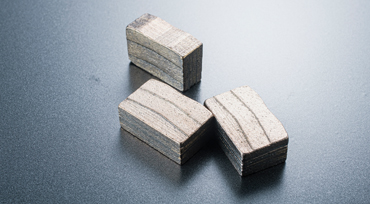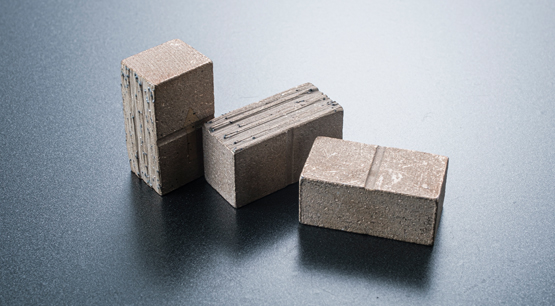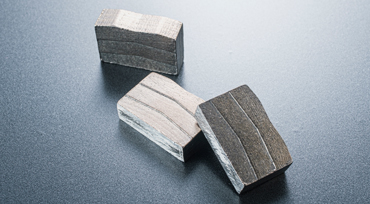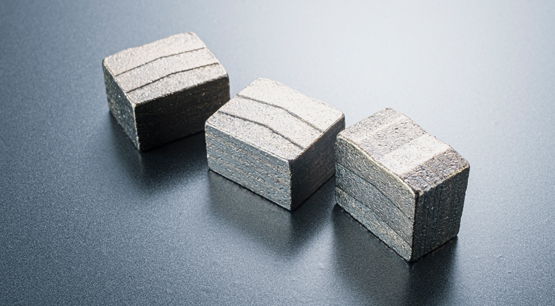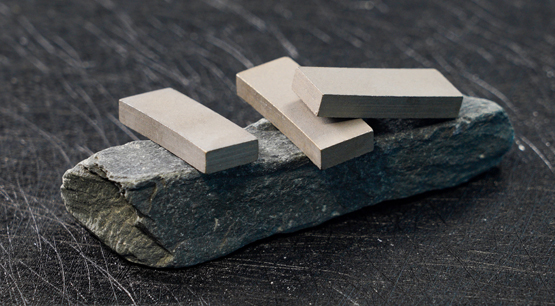Diamond segments are essential tools used for cutting and grinding various materials. The performance of these blades often depends on the secure attachment of diamond particles to the blade's matrix, a process achieved through welding. In this article, we will provide a detailed overview of the welding techniques for Diamond segments, including the required materials, steps, and precautions.
Materials Required:
Before embarking on the welding of Diamond segments, it's essential to gather the necessary materials and tools:
Diamond segment: This is the blade that requires welding. Ensure its surface is clean, free from dust, oil, or impurities. If there are remnants of previous welding, these should be removed.
Blade Matrix: Typically made of metal, it provides support for the diamond particles. The quality and stability of the matrix are crucial for welding quality.
Welding Material: Commonly used metals like gold, silver, or copper with good electrical and thermal conductivity serve as welding materials.
Fixturing Equipment: Fixtures are used to securely hold the Diamond segment and matrix in precise alignment for welding.
Welding Equipment: This includes welding machines such as arc welders, high-frequency induction welders, or other suitable welding devices to generate the required heat for welding.
Cooling Fluid: Used for rapid cooling of the welded area to ensure proper cooling of the diamond particles and prevent overheating.
Welding Steps:
The following steps outline the welding process for Diamond segments:
Preparation: Ensure the workspace is clean, free of flammable materials, and any potential hazards. Wear appropriate personal protective equipment, such as safety glasses and gloves.
Prepare Blade and Matrix: Clean the surfaces of both the Diamond segment and the blade matrix, ensuring no dust, grease, or impurities remain. Any remnants from prior welding should be thoroughly removed.
Fixture Setup: Use fixtures to firmly secure the Diamond segment and blade matrix in the desired welding position. Ensure proper alignment and stability between them.
Set Welding Parameters: Depending on the materials of the Diamond segment and matrix, configure the welding equipment's parameters, including current, voltage, and welding time. Accurate parameter settings are critical for successful welding.
Welding Process: Activate the welding equipment to introduce the welding material into the welding area, generating sufficient heat to melt the welding material. Ensure that the welding time is controlled to avoid overheating of the diamond particles.
Cooling Treatment: After welding is complete, quickly immerse the blade in a cooling fluid to ensure the proper cooling of the diamond particles and prevent overheating.
Inspection and Testing: Examine the welded area carefully to confirm a secure bond between the diamond particles and the blade matrix, with no evident cracks or loosening. Additional tests, such as impact tests, may be performed to validate the welding quality.
Cleanup and Maintenance: Clean the welding area, removing any welding residues and cooling fluid. For any portions with welding defects, repairs or re-welding may be necessary.
Precautions:
1. Avoid overheating during welding to prevent damage to the diamond particles.
2. Regularly inspect welding equipment for proper functioning to prevent unexpected failures.
3. Ensure proper ventilation in the workspace during welding to remove harmful gases and fumes.
Welding Diamond segments is a critical process that directly impacts their performance and longevity. Employing the correct welding techniques and maintenance practices ensures that Diamond segments function optimally for cutting and grinding tasks.
Iron-based diamond segments are specialized tools known for their exceptional hardness and wear resistance, making them excellent for cutting hard materials like stone and concrete efficiently. They have a long lifespan and can handle high temperatures, but they may not perform well on softer materials, can be sensitive to impacts, require expertise for welding, and need regular maintenance. In summary, Iron-based Diamond segments are powerful for precision cutting of hard materials but have specific use and care considerations.




